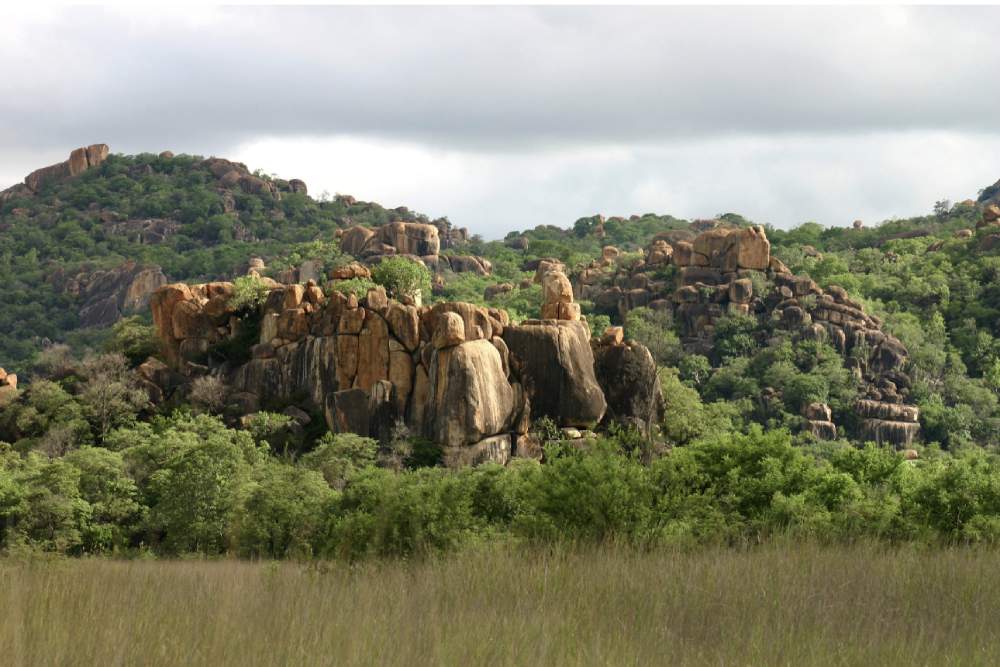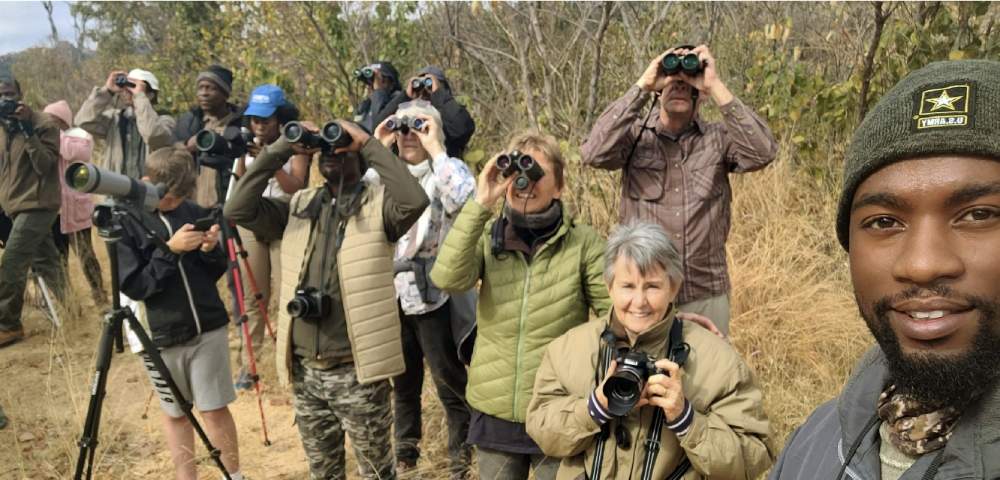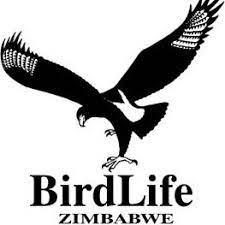CONSERVATION – PREVENTING EXTINCTION PROGRAMME
Verreaux’s Eagle
Black Eagle (Aquila verreauxii)
The Verreaux’s Eagle (formerly called Black Eagle) is a large, mostly African, bird of prey with specific habitat requirements and is rarely outside of its particular habitat type. It lives in kopjes (rocky hills) to cliffs and high mountains, gorges and inselbergs often surrounded by dry savannah or woodlands to sub-desert. It is one of the most specialized species of eagle in the world, with its distribution and life history revolving around its favourite prey species, the hyrax.
 Verreaux’s Eagle habitat, Matopos National Park, Photo Dave Dell
Verreaux’s Eagle habitat, Matopos National Park, Photo Dave Dell
When hyrax populations decline, the species have been shown to survive with mixed success on other prey, such as small antelopes, gamebirds, hares, monkeys and other assorted vertebrates. The species is found in many areas of Zimbabwe, with the largest number of breeding pairs in the Matobo Hills. The Black Eagle Survey (BES) of the Matobo has been held annually between May and October since the late 1950s and is arguably the longest studied eagle population in the world. The species has been subjected to continuous detailed study of their territories, nest sites, breeding success and their prey species, the rock and yellow-spotted hyrax (commonly known as “dassies”) by the Matabeleland branch of BirdLife Zimbabwe. Although the species conservation status is listed as least concern (IUCN 3.1), there is need to conserve the species as the general number of raptors are rapidly declining due to habitat loss and climate change.
What does BES (Black Eagle Survey) do?
- Further the study and survey of the Black Eagles.
- Rock and yellow-spotted hyrax (dassies) counts.
- Promotes the preservation of Zimbabwean eagles as an integral part of the African Heritage.
- Fosters an appreciation of raptors and discussion of Zimbabwean birds in relation to man.
- Disseminates information on eagles through appropriate meetings (education and conservation efforts).
- Shares different field experiences and data collection techniques.

60th Anniversary of Black Eagle Survey, Matopos, 2023. Photo Peter Makhusa
